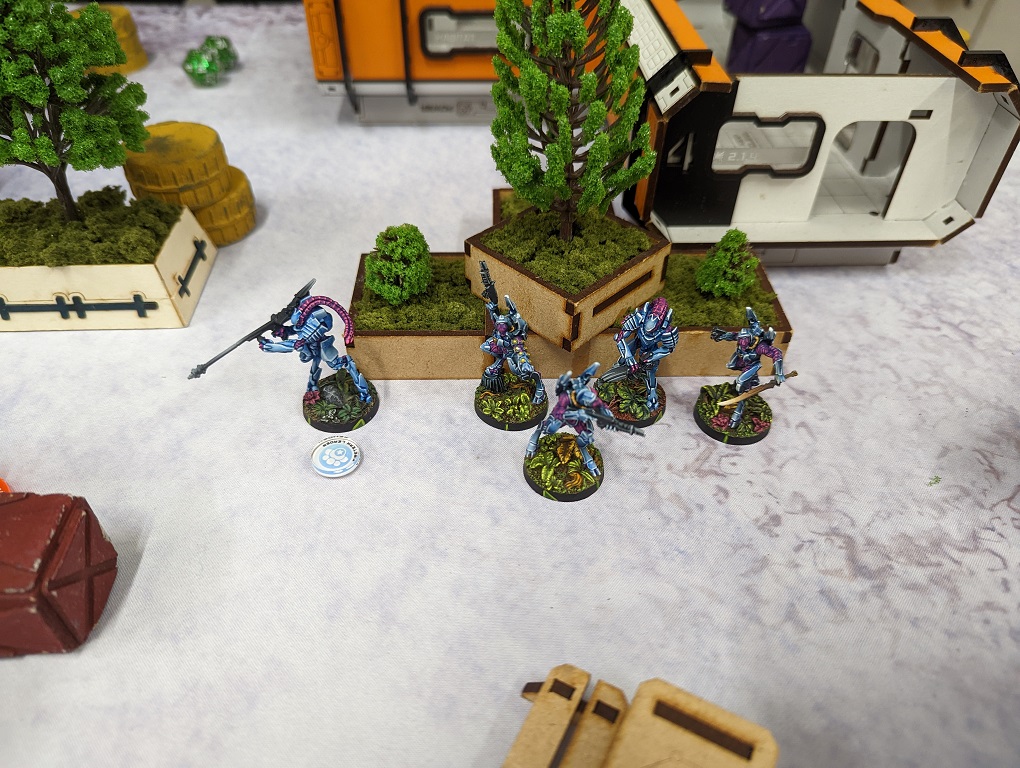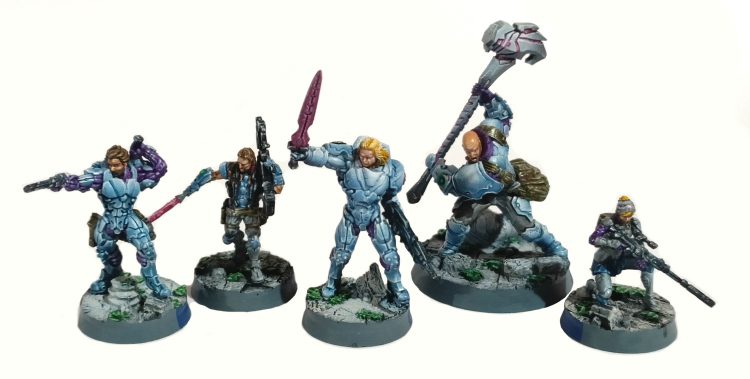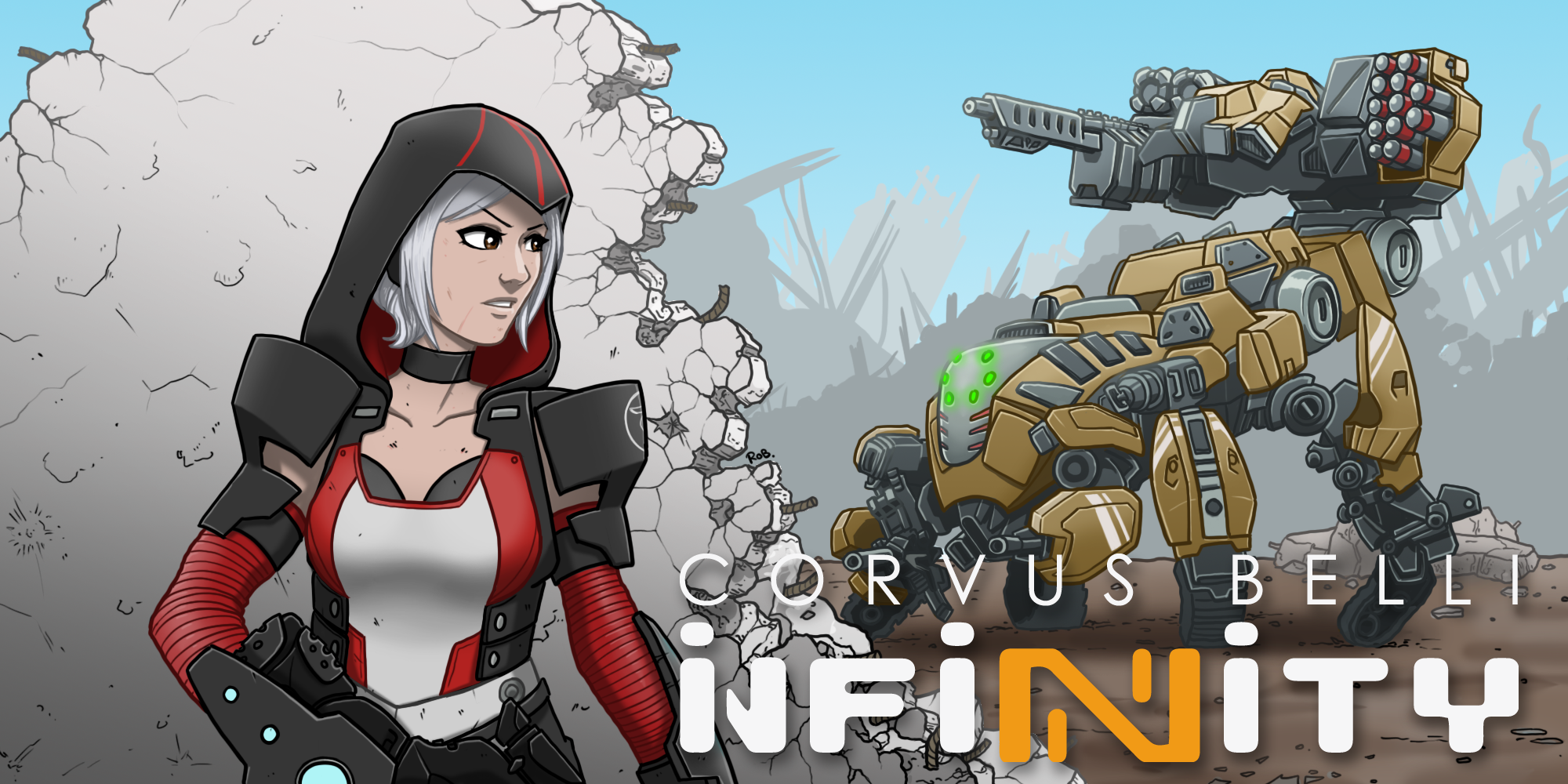This article is, at least in part, a rebuttal to my esteemed colleague’s baseless diatribe against Infinity’s N4 edition. Let us leave to one side that the honourable gentleman chose to put the boot into the aged edition as it lies on its final sickbed. Instead, we will defeat his arguments one by one, with the aim of showing that N4, while not perfect, was a great improvement on preceding editions of the game, was widely successful, and introduced great concepts which are still bearing fruit and should be continued in N5.

The Gamespace Did Not Shrink In Any Meaningful Way
As Thanqol himself acknowledged, the move to 15 trooper limits on lists was necessary. I consider it a freedom, not a constraint – Infinity’s system of Orders tied to the number of models, while simple and elegant, will always incentivize taking things as cheap and lean as possible. The 15-cap is a good way to limit the dominance of chaff models, without simply over-costing them into not being effective. He did mention the misery of playing lists with 20+ models, but old salts can also recall how some of the coolest ‘heavy’ models in the game were relegated to the shelf in favour of endless light infantry and warbands.
Infinity has an enormous amount of freedom in list-building, you can take damn near anything you please. It has a points and Special Weapons Cost (SWC) limit, and each unit has a maximum availability (AVA). You must have one model with a Lieutenant profile. That’s it. Compared to any other wargame I have played, that is actually a very light set of restrictions on force structure. My colleague is referring to the ‘restrictions’ of the metagame and the strictures of competitive play, rather than anything in the base rules, and I would argue that any edition is bound to develop a recommended competitive force structure, as the community ‘solves’ certain lists. N4’s solved meta has grown slightly stale and needs a shake-up – but it has been far closer to the background and power fantasy of Infinity than N3 ever was.
Fireteams are Just Fine

They never ‘came for’ Fireteams. They are just as prevalent as ever, and easier to build. Some (not all) of the most infamous bunker teams, with a single gun as a hard-stop ARO, and 4 passive cheerleaders, got reined in a bit. You can still build and field those exact same teams, they just got limited to +1BS bonus, not +3. Using ‘Pain Trains’ of 5 expensive, wholly or partially HI, models, has never been a good idea in competitive play. The factions which were most suitable to it were OK in certain missions and match-ups. It’s an all-in strategy, it can roll players who are unprepared or don’t have the tools for it, and folds like a house of cards if they do. Those facts are based on the tactics and strategy of putting half or more of your resources into one basket, and leaving that basket on your opponent’s doorstep in the middle of the table. They are not materially affected by the composition bonuses, the most important of which, Sixth Sense, actually stayed the same. Do you hear me, Thanqol? It was never about the composition bonuses.
The So-Called Bloating of the Gamespace

I actually agree that vanilla factions were getting too big, and AVA1 mercenary troops were too prevalent for too long. Thanqol is not wrong about that. He’s wrong about vanilla factions “sucking” though. Vanilla is a beautiful place where all 3 (or more) Sectorial flavours blend into a taste sensation. I like a lot of Corregidor Sectorial units from Nomads, I like a lot of Tunguska units, I like a very few Bakunin units. Vanilla is my chance to enjoy all those together, and with N5 there will be some new limits on that. This is a necessary evil – vanilla factions couldn’t just grow indefinitely, and there can be much better differentiation in playstyle by keeping some units exclusive to their Sectorials. But I will have to wave the combination of Intruders and Prowlers, the coolest Medium Infantry dudes in Nomads, off into the sunset. Never again shall those twain meet.
Thanqol is also underplaying the extent to which N4 introduced Sectorials which really played with that notion of exclusive profiles. Yes, vanilla factions got bloated, but the first experiments in limiting that tendency were already being introduced. Military Orders got Trinitarian Tertiaries and a special version of the Tikbalangs TAG which vanilla PanO was denied; Bakunin was reworked with a slew of very impactful Observancy-themed units which were locked out of vanilla Nomads; finally, Torchlight Brigade, which appears to be an N5-ready Sectorial, has some of its most important units exclusive from O-12. N4 walked so that N5 might run.
Thanqol rails against ‘the list’, with a very apt description of how to build a good competitive Infinity list. To me, this requirement for combined arms tactics, and variable options, in high level play, is a huge selling point of the game. It emphasises how Infinity can be played as unlocking a puzzle problem formed from the table layout, enemy AROs and the mission objectives. There is a tyranny of competitive list-building. But it is far better and more engaging than other wargames I have played, where building a competitive list can be as simple as skewing or spamming the one thing that works best in your faction.
I would also point out again that Thanqol is conflating the game’s core design, with the competitive meta. Players who are “in it to win it” during tournaments may well default to that sort of rounded, optimised meta list. But including ¾ of the elements, in order to double down in one area, is not that much less effective. Free your mind, Thanqol. If you want to dump the guided missile bot and take another skirmisher, you can do it!

I think it’s wrong to cast N4 as a paralysis edition. Fireteams were tweaked, albeit I don’t think they went far enough, and Corregidor lost out badly (I’m not going to pretend to be impartial). CB did some bold things with trialling improved motorcycle units in an ITS season, then introducing them into the game. Finally the Classified Deck was improved and a new Resilience Ops game mode, which I think is broadly successful, was introduced.
Reinforcements: OK It Didn’t Quite Work

I really liked the idea; I do think the rules were half-baked and only partially fixed up. I do think the community needs to take some of the blame for not embracing something outside the pattern of play they were comfortable with, and I hope Reinforcements gets revisited in N5. Personally I think they should arrive on Round 2 with no flex either way, and their deployment area should be a bit more restricted.
Thanqol quotes Rob on the issue of every Reinforcements game falling into the same pattern, and I don’t dispute that. I do think the mode could be rescued with a limited number of changes, and asymmetric games (one player using Reinforcements and one using a conventional list) would certainly open up new play experiences, not without pitfalls. So I guess fundamentally, I had a similar Reinforcements experience to Thanqol, but I was not left twisted and bitter, as he was.
Welcoming Change
I do think the meta, notably internal unit balance, has solidified to the point where a lot of factions are ‘solved’; all the experienced players know which competitive units will be fielded against them as soon as they hear which faction their opponent plays. Everything we have heard about N5, I am positive about, and I can’t wait to hear more.
Confident prediction: I will still roll through any bloated Heavy Infantry pain train that Thanqol cares to field against me.


